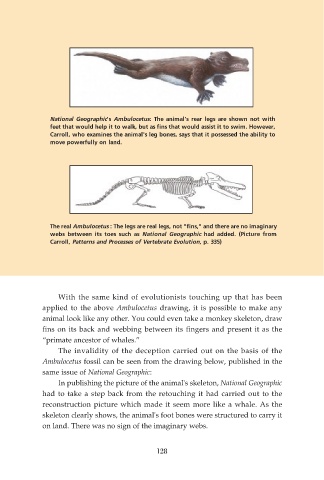Page 130 - Darwinism Refuted
P. 130
National Geographic's Ambulocetus: The animal's rear legs are shown not with
feet that would help it to walk, but as fins that would assist it to swim. However,
Carroll, who examines the animal's leg bones, says that it possessed the ability to
move powerfully on land.
The real Ambulocetus : The legs are real legs, not "fins," and there are no imaginary
webs between its toes such as National Geographic had added. (Picture from
Carroll, Patterns and Processes of Vertebrate Evolution, p. 335)
With the same kind of evolutionists touching up that has been
applied to the above Ambulocetus drawing, it is possible to make any
animal look like any other. You could even take a monkey skeleton, draw
fins on its back and webbing between its fingers and present it as the
“primate ancestor of whales.”
The invalidity of the deception carried out on the basis of the
Ambulocetus fossil can be seen from the drawing below, published in the
same issue of National Geographic:
In publishing the picture of the animal's skeleton, National Geographic
had to take a step back from the retouching it had carried out to the
reconstruction picture which made it seem more like a whale. As the
skeleton clearly shows, the animal's foot bones were structured to carry it
on land. There was no sign of the imaginary webs.
128

